Tina Modotti – Without Walls
This drama documentary features the life of photographer, political activist, and Hollywood actress Tina Modotti.
View more Videos On Photographers here.
Read conversations with photographers here.
This drama documentary features the life of photographer, political activist, and Hollywood actress Tina Modotti.
View more Videos On Photographers here.
Read conversations with photographers here.
Get 15% Off Helicon Focus With This Code – 45K2D46GT2
Helicon Focus from (dstudiosoft.com) is the ultimate software for focus stacking (increasing depth of field by combining focus bracketed exposures) offering an unparalleled level of precision with a minimum amount of artifacting.
Key features include …
Autoadjustment
The controls on this tab defines how adjacent images in the stack should be adjusted. Read more…
Enhanced Lanczos Resampling
Helicon Focus 4.0.1 introduced new enhanced Lanczos resampling which preserves more details during image alignment process.
Retouching
Need to copy focused areas from the manually selected source images to the resulting image, clone any areas on resulting image from one place to another.
Cleaning Dust Artifact
Special function in helicon Focus to remove black points from the images caused by dust on the sensor or dust in the optical system of the microscope.
Micro Panorama
Micro panorama function is designed to stitch images made through the microscope.
Helicon 3D Viewer
Helicon 3D Viewer is a free utility to manipulate 3D models produced by Helicon Focus.
Read more here.
Learn more in my digital photography and digital printing workshops.
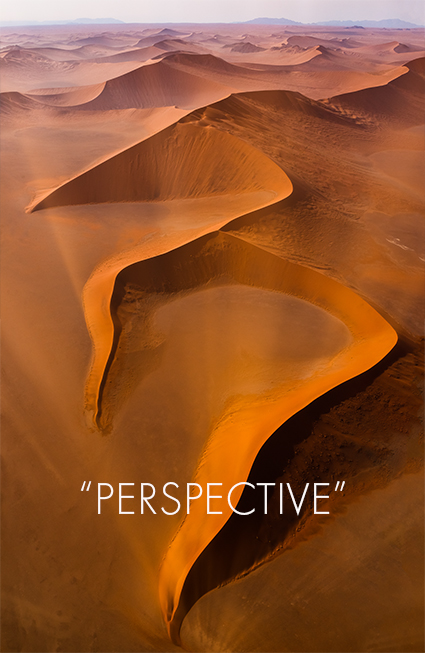
Here’s a selection of my favorite quotes on perspective.
“A little perspective, like a little humor, goes a long way.” – Allen Klein
“Perspective is worth 80 IQ points.” – Alan Kay
“Everything we hear is an opinion, not a fact. Everything we see is a perspective, not the truth.” – Marcus Aurelius
“Our loyalties must transcend our race, our tribe, our class, and our nation; and this means we must develop a world perspective.” – Martin Luther King, Jr.
“Never write about a place until you’re away from it, because that gives you perspective” – Ernest Hemingway
“In the perspective of every person lies a lens through which we may better understand ourselves.” – Ellen J. Langer
“Never solve a problem from its original perspective.” – Charles Thompson
“Reality is a question of perspective; the further you get from the past, the more concrete and plausible it seems – but as you approach the present, it inevitably seems incredible.” – Salman Rushdie
“The trick to forgetting the big picture is to look at everything close up.” ― Chuck Palahniuk
“Always focus on the front windshield and not the review mirror.” ― Colin Powell
“I never saw an ugly thing in my life: for let the form of an object be what it may – light, shade, and perspective will always make it beautiful” – John Constable
“I believe everyone should have a broad picture of how the universe operates and our place in it. It is a basic human desire. And it also puts our worries in perspective.” – Stephen Hawking
“Humans have the ability to shift perspective. We can experience the world through our senses. Or we can remove ourselves from our senses and experience the world even less directly. We can think about our life, rather than thinking in our life.” – John J. Emerick
“No perspective, no perception. / New perspective, new perception.” ― Toba Beta
“What I need is perspective. The illusion of depth, created by a frame, the arrangement of shapes on a flat surface. Perspective is necessary. Otherwise there are only two dimensions. Otherwise you live with your face squashed up against a wall, everything a huge foreground, of details, close-ups, hairs, the weave of the bedsheet, the molecules of the face. Your own skin like a map, a diagram of futility, crisscrossed with tiny roads that lead nowhere. Otherwise you live in the moment. which is not where I want to be.” ― Margaret Atwood
“Winners have the ability to step back from the canvas of their lives like an artist gaining perspective. They make their lives a work of art / an individual masterpiece.” – Denis Waitley
Find more creativity quotes here.
Read more quotes daily on Twitter and Facebook.
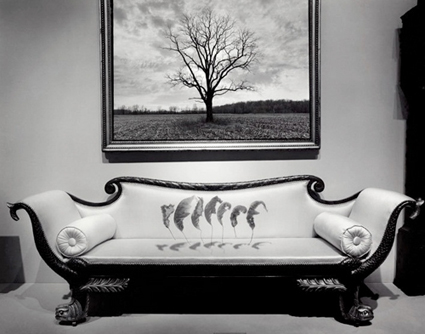
Here’s a selection of my favorite quotes by photographer Jerry Uelsmann.
“Photography is just light remembering itself.” – Jerry Uelsmann
“The camera is a license to explore.” – Jerry Uelsmann
“There are no uninteresting things. There are just uninterested people.” – Jerry Uelsmann
“I try to begin working with no preconceived ideas.” – Jerry Uelsmann
“When the entire process becomes a prescribed ritual that does not allow for spontaneous variations and reactions, the vitality of the medium and our relation to it suffers.” – Jerry Uelsmann
“Let us not be afraid to allow for “post-visualization.” By post-visualization I refer to the willingness on the part of the photographer to revisualize the final image at any point in the entire photographic process.” – Jerry Uelsmann
“It is the illusion of knowledge, not ignorance, that keeps one from growing.” – Jerry Uelsmann
“The goal of the artist is not to resolve life’s mysteries, but to deepen them.” – Jerry Uelsmann
“In the arts there are many right answers.” – Jerry Uelsmann
“The truth is that one is more frequently blessed with ideas while working.” – Jerry Uelsmann
“I’ve learned over the years that when you get a clue to another possibility to follow it through…” – Jerry Uelsmann
“The camera is a fluid way of encountering that other reality.” – Jerry Uelsmann
“My visual quest is driven by a desire to create a universe capable of supporting feelings and ideas.” – Jerry Uelsmann
“I think of many of my photographs as being obviously symbolic but not symbolically obvious. There isn’t any specific correlation between the symbols in this image and any content that I have in mind.” – Jerry Uelsmann
“One of the major changes in attitude that occurred in the world of art as we moved from the nineteenth into the twentieth century was that the twentieth century artist became more involved with personal expression than with celebrating exclusively the values of the society or the church. Along with this change came a broader acceptance of the belief that the artist can invent a reality that is more meaningful than the one that is literally given to the eye. I subscribe enthusiastically to this.” – Jerry Uelsmann
“The contemporary artist…is not bound to a fully conceived, previsioned end. His mind is kept alert to in-process discovery and a working rapport is established between the artist and his creation. While it may be true, as Nathan Lyons stated, ‘The eye and the camera see more than the mind knows,’ is it not also conceivable that the mind knows more than the eye and the camera can see?” – Jerry Uelsmann
“All knowledge is self-reflective.” – Jerry Uelsmann
“I’m really very concerned with helping to create an attitude of freedom and daring toward the craft of photography.” – Jerry Uelsmann
“Ultimately, my hope is to amaze myself. The anticipation of discovering new possibilities becomes my greatest joy.” – Jerry Uelsmann
“I have gradually confused photography with life.” – Jerry Uelsmann
“The creative process can sustain itself throughout the entire celebration of photography.” – Jerry Uelsmann
Read my conversation with Jerry Uelsmann here.
Read more Photographer’s Quotes here.
This 1963 documentary about master photographer Edward Steichen offers many glimpses into the man and his methods.
View more Videos On Photographers here.
Read conversations with photographers here.
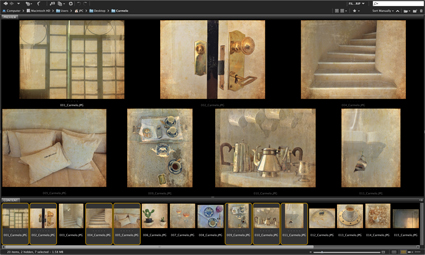
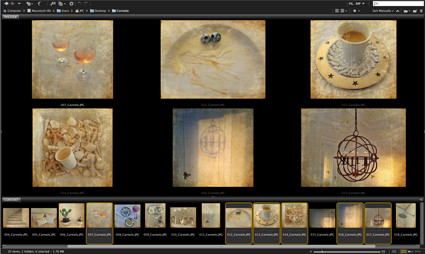
While visiting friends at their new house in Carmelo, Uruguay I enjoyed making photographs to help me savor the experience more. Muchas gracias Marinuccis!
Visit larger images on Google+.
View more Contact Sheets here.
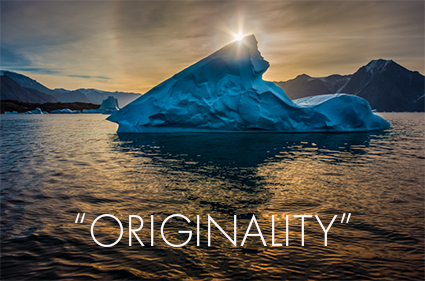
Here’s a selection of my favorite quotes on originality.
“A man’s originality is not only the most beautiful , but his best personality for humanity in life. “- Anuj Somany
“No one can be profoundly original who does not avoid eccentricity.” – Andre Maurois
“But it is better to fail in originality than to succeed in imitation.” – Herman Melville
“Originality consists in trying to be like everybody else – and failing.” – Raymond Radiguet
“Nearly all our originality comes from the stamp that time impresses upon our sensibility.” – Charles Baudelaire
“When a work appears to be ahead of its time, it is only the time that is behind the work.”- Jean Cocteau
“The more original a discovery, the more obvious it seems afterwards.” – Arthur Koestler
“Those who say there are no more original ideas need to get out of the way of those of us who are creating them.” – Steven Symes
“A man’s mind stretched by a new idea, can never go back to its original dimensions.” – Oliver Wendell Holmes
“Originality is a thing we constantly clamour for, and constantly quarrel with.” – Thomas Carlyle
“If you’re not prepared to be wrong, you’ll never come up with something original.” – Ken Robinson
“No one ever discovered anything new by coloring inside the lines.” – Thomas Vasquez
“It is necessary to any originality to have the courage to be an amateur.” – Wallace Stevens
“The merit of originality is not novelty, it is sincerity.” – Thomas Carlyle
“Originality does not consist in saying what no one has ever said before, but in saying exactly what you think yourself.” – James Stephens
“The greater intellect one has, the more originality one finds in men. Ordinary persons find no difference between men.” – Blaise Pascal
“Originality exists in every individual because each of us differs from the others. We are all primary numbers divisible only by ourselves.” – Jean Guitton
“Always be a first-rate version of yourself, instead of a second-rate version of somebody else.” – Judy Garland
“Insist upon yourself. Be original.” – Ralph Waldo Emerson
“Do your work, but do your thing.” – Ralph Waldo Emerson
“When there is an original sound in the world, it makes a hundred echoes.” – John A. Shedd“
Some writers confuse authenticity, which they ought always to aim at, with originality, which they should never bother about.” – W.H. Auden
Find more creativity quotes here.
Read more quotes daily on Twitter and Facebook.
Here’s a collection of my favorite quotes by photographer Alfred Stieglitz.
“Photography my passion, the search for truth, my obsession.” – Alfred Stieglitz
“When I photograph I make love.” – Alfred Stieglitz
“If you can imagine photography in the guise of a woman and you’d ask her what she thought of Stieglitz, she’d say: He always treated me like a gentleman.” – Alfred Stieglitz
“Wherever there is light, one can photograph.” – Alfred Stieglitz
“…the goal of art was the vital expression of self.” – Alfred Stieglitz
“In photography there is a reality so subtle that it becomes more real than reality.” – Alfred Stieglitz
“My photographs are a picture of the chaos in the world, and of my relationship to that chaos. My prints show the world’s constant upsetting of man’s equilibrium, and his eternal battle to reestablish it.” – Alfred Stieglitz
“For that is the power of the camera: seize the familiar and give it new meanings, a special significance by the mark of a personality.” – Alfred Stieglitz
“I have all but killed myself for Photography. My passion for it is greater than ever. It’s forty years that I have fought its fight – and I’ll fight to the finish – single handed & without money if need be. It is not photographs – it is not photographers – I am fighting for. And my own photographs I never sign. I am not fighting to make a ‘name’ for myself. Maybe you have some feeling for what the fight is for. It’s a world’s fight. This sounds mad. But so is Camera Work mad. All that’s born of spirit seems mad in these [days] of materialism run riot.” – Alfred Stieglitz
“My ideal is to achieve the ability to produce numberless prints from each negative, prints all significantly alive, yet indistinguishably alike, and to be able to circulate them at a price not higher than that of a popular magazine, or even a daily paper. To gain that ability there has been no choice but to follow the road I have chosen.” – Alfred Stieglitz
“My aim is increasingly to make my photographs look so much like photographs [rather than paintings, etchings, etc.] that unless one has eyes and sees, they won’t be seen – and still everyone will never forget having once looked at them.” – Alfred Stieglitz
“Photographers must learn not to be ashamed to have their photographs look like photographs.” – Alfred Stieglitz
“I do not object to retouching, dodging. or accentuation as long as they do not interfere with the natural qualities of photographic technique.” – Alfred Stieglitz
“I am not a painter, nor an artist. Therefore I can see straight, and that may be my undoing.” – Alfred Stieglitz
“There is nothing so wrong as accepting a thing merely because men who have done things say it should be so.” – Alfred Stieglitz
“There are many schools of painting. Why should there not be many schools of photographic art? There is hardly a right and a wrong in these matters, but there is truth, and that should form the basis of all works of art.” – Alfred Stieglitz
“The ability to make a truly artistic photograph is not acquired off-hand, but is the result of an artistic instinct coupled with years of labor.” – Alfred Stieglitz
“It is not art in the professionalized sense about which I care, but that which is created sacredly, as a result of a deep inner experience, with all of oneself, and that becomes ‘art’ in time.” – Alfred Stieglitz
“Let me here call attention to one of the most universally popular mistakes that have to do with photography – that of classing supposedly excellent work as professional, and using the term amateur to convey the idea of immature productions and to excuse atrociously poor photographs. As a matter of fact nearly all the greatest work is being, and has always been done, by those who are following photography for the love of it, and not merely for financial reasons. As the name implies, an amateur is one who works for love; and viewed in this light the incorrectness of the popular classification is readily apparent.” – Alfred Stieglitz
“The great geniuses are those who have kept their childlike spirit and have added to it breadth of vision and experience.” – Alfred Stieglitz
Read more Photographer’s Quotes here.
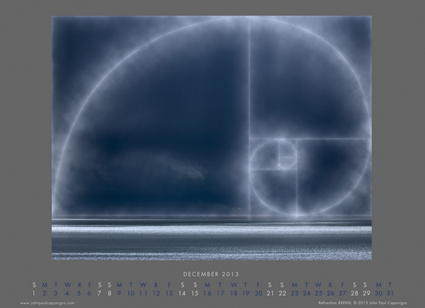
This month’s desktop calendar features an image from The Great Salt Lake.
Download it here now.
Find out about upcoming events here.
Cartier-Bresson offers marvelous observations on the art of photography.
View more photographer’s videos here.
Read conversations with photographers here.

